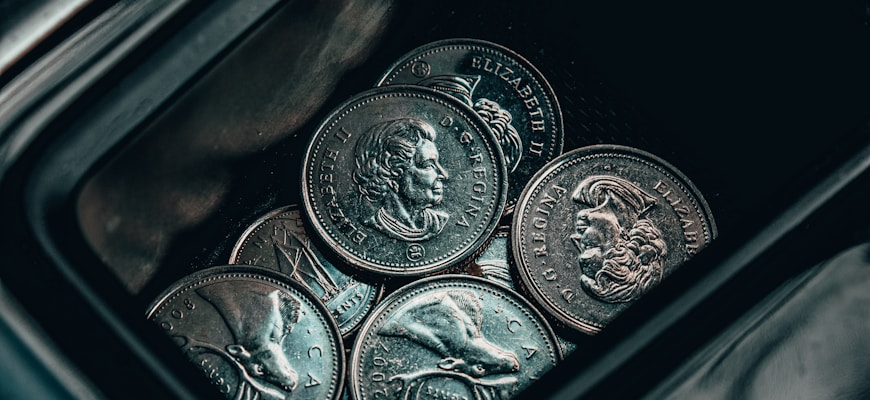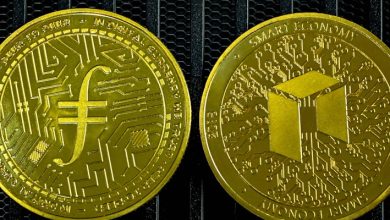How to Use Technical Analysis for Token Price Predictions

- Understanding the basics of technical analysis
- Key indicators to consider when analyzing token prices
- Using chart patterns to predict token price movements
- Incorporating volume and momentum into your analysis
- Common pitfalls to avoid when using technical analysis for token price predictions
- Combining fundamental and technical analysis for more accurate predictions
Understanding the basics of technical analysis
Understanding the basics of technical analysis is crucial for making accurate token price predictions in the cryptocurrency market. Technical analysis involves studying historical price data and using various tools to identify patterns that can help forecast future price movements. By analyzing charts and indicators, traders can gain insights into market trends and make informed decisions about buying or selling tokens.
One of the key principles of technical analysis is that price movements are not random, but rather follow recognizable patterns that can be used to predict future movements. Traders use tools such as moving averages, support and resistance levels, and trendlines to identify these patterns and make predictions about where prices are likely to go next.
Technical analysis is based on the idea that market trends tend to repeat themselves, and that by studying past price movements, traders can gain insights into how prices are likely to behave in the future. By understanding the basics of technical analysis, traders can develop a better understanding of market dynamics and make more informed decisions about when to buy or sell tokens.
Key indicators to consider when analyzing token prices
When analyzing token prices, there are several key indicators that you should consider to make more accurate predictions. These indicators can give you valuable insights into the market trends and help you make informed decisions about buying or selling tokens. One important indicator to look at is the trading volume of a token. High trading volume often indicates increased interest in a token, which can lead to price movements. On the other hand, low trading volume may suggest a lack of interest and potential price stagnation.
Another crucial indicator to consider is the market capitalization of a token. Market capitalization is calculated by multiplying the current price of a token by its total supply. Tokens with higher market capitalization are generally considered more stable and less volatile than those with lower market capitalization. Additionally, market capitalization can give you an idea of the overall value and popularity of a token in the market.
One more indicator to pay attention to is the historical price data of a token. By analyzing past price movements, you can identify patterns and trends that may help you predict future price movements. Technical analysis tools such as moving averages, support and resistance levels, and chart patterns can be used to interpret historical price data and make more accurate predictions about future price movements.
Overall, by considering these key indicators when analyzing token prices, you can improve your ability to predict price movements and make more informed decisions about your investments. Keep in mind that no indicator is foolproof, and it’s essential to use a combination of indicators and analysis techniques to develop a well-rounded understanding of the market.
Using chart patterns to predict token price movements
One effective way to predict token price movements using technical analysis is by analyzing chart patterns. Chart patterns are visual representations of price movements that can help traders identify potential trends and make informed decisions. By studying patterns such as head and shoulders, double tops, triangles, and flags, traders can gain insights into the possible direction of token prices.
These patterns can provide valuable information about the market sentiment and help traders anticipate potential price movements. For example, a head and shoulders pattern typically indicates a reversal in the current trend, while a double top pattern suggests a potential bearish reversal. By recognizing these patterns and understanding their implications, traders can better predict the future direction of token prices.
It is essential to combine chart pattern analysis with other technical indicators to increase the accuracy of price predictions. By using a combination of indicators such as moving averages, relative strength index (RSI), and volume analysis, traders can develop a more comprehensive understanding of market dynamics. This holistic approach can help traders make more informed decisions and improve their overall trading strategy.
In conclusion, chart patterns are a valuable tool for predicting token price movements. By studying these patterns and combining them with other technical indicators, traders can gain valuable insights into market trends and make more accurate predictions. Incorporating chart pattern analysis into your trading strategy can help you navigate the volatile cryptocurrency market more effectively and increase your chances of success.
Incorporating volume and momentum into your analysis
When analyzing token prices, it is essential to incorporate volume and momentum indicators into your technical analysis. Volume refers to the number of tokens traded over a specific period, indicating the level of interest and activity in the market. High volume typically confirms the strength of a price movement, while low volume may signal a lack of conviction among traders.
Momentum, on the other hand, measures the rate of change in token prices. By analyzing momentum indicators such as the Relative Strength Index (RSI) or Moving Average Convergence Divergence (MACD), you can identify potential trend reversals or confirm the strength of an existing trend. Combining volume and momentum analysis can provide valuable insights into the underlying forces driving token prices.
Common pitfalls to avoid when using technical analysis for token price predictions
When using technical analysis for token price predictions, there are several common pitfalls that traders should avoid to increase their chances of success. By being aware of these potential pitfalls, traders can make more informed decisions and improve their overall trading strategy.
One common pitfall to avoid is relying too heavily on technical indicators without considering other factors that may impact token prices. While technical analysis can provide valuable insights into market trends and patterns, it is important to also consider fundamental analysis and market sentiment when making price predictions.
Another common mistake is using technical analysis in isolation without taking into account the broader market context. Token prices can be influenced by a variety of factors, including regulatory developments, macroeconomic trends, and news events. Traders should consider all of these factors when using technical analysis to predict token prices.
Additionally, traders should be cautious of overfitting their technical analysis models to historical data. While historical price data can provide valuable information about market trends, it is important to remember that past performance is not always indicative of future results. Traders should use technical analysis as a tool to inform their decision-making process, rather than relying solely on historical data.
Overall, by avoiding these common pitfalls and taking a comprehensive approach to technical analysis, traders can improve their accuracy in predicting token prices and make more informed trading decisions.
Combining fundamental and technical analysis for more accurate predictions
Combining fundamental and technical analysis can lead to more accurate predictions when it comes to token price movements. While technical analysis focuses on historical price data and chart patterns, fundamental analysis looks at the underlying factors that can affect the value of a token.
By combining these two approaches, investors can gain a more comprehensive understanding of the market dynamics that drive token prices. This can help them make more informed decisions about when to buy or sell tokens.
For example, while technical analysis might indicate that a token is currently undervalued based on its price chart, fundamental analysis could reveal that there are upcoming events or developments that could significantly impact the token’s value in the near future.
By taking both technical and fundamental analysis into account, investors can reduce their risk and increase their chances of making successful trades in the highly volatile cryptocurrency market.




